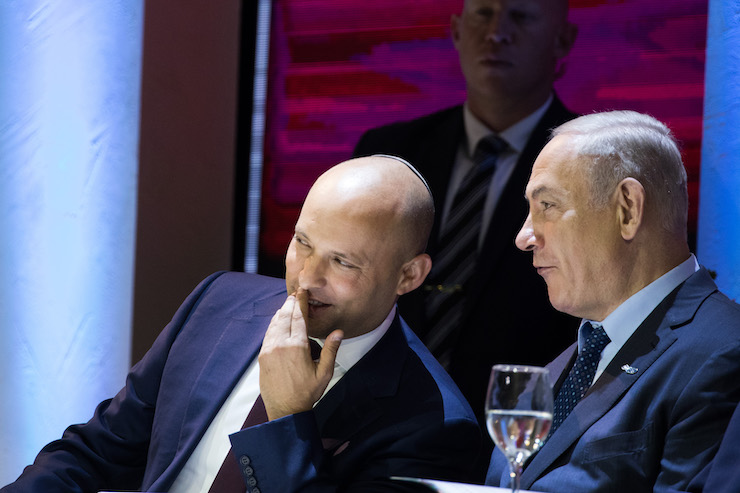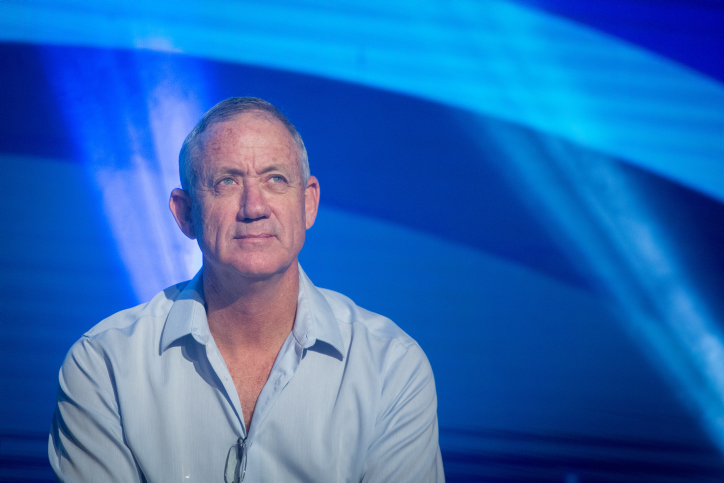The political map in Israel hasn’t fundamentally changed since a decade ago, when left-wing voters migrated to the center and centrist voters moved right.

The last week has seen feverish speculation about the possibility of early elections in Israel, primarily against the backdrop of infighting about how to handle Gaza. Defense Minister Liberman resigned and the governing coalition teetered; but on Monday the Jewish Home party announced its intention to remain, pulling Israel back from the brink of elections — for the moment. The situation is so volatile that new elections could still be called early — in March or May. At latest, they will be held one year from now, as scheduled, in November 2019.
To understand where Israel might wind up, we need to know what about the political system will not change — and where potential surprises might lie.
What we know
First, the current government has essentially maxed out its four-year term, and Netanyahu will be credited with generating relative stability in Israel’s notorious political jungle. In the past, it was rare for an Israeli government to last even close to a full term.
Second, the ideological splits in the Israeli public have been stable for roughly a dozen years. Seismic shifts during the Second Intifada led to a migration of left-wingers to the self-defined political center. They added to that camp but also replaced some centrists who migrated right, causing the percentage of Jewish right-wingers to drift upward over the decade (from around 40 percent prior to the intifada).
By around 2007, this process was complete. The political map has hardly changed since then. Currently, the portion of all Israelis who call themselves right wing stands at around 46 percent — among the Jewish population, that’s just over half. The number of self-defined centrists is roughly one-quarter, and the portion of left-wingers is stable at about one-fifth (about 14 to 15 percent of the Jewish population). Overall, most polls show a slight plurality of right-wingers, versus the center-left bloc.
Given that, the Knesset is a roughly fair representation of the citizens who vote in national elections. Of 120 seats, the right and religious coalition has 12 more seats than the center, left and Arab opposition parties combined — 66 to 54.
It makes sense, therefore, that a third relatively stable feature of Israeli politics is the party bloc breakdown since the last elections. In public polls, the current coalition parties enjoy generally the same advantage over the opposition parties as they did in the last elections. The range of that gap varies, but most often the right’s margin is just a bit above or below the 12-seat lead it holds now.
Following some changes after the 2015 elections, individual party trends are also fairly stable. During the year after the last elections, the Zionist Union (the Labor Party and Tzipi Livni) fell from 24 seats to the mid teens in surveys. The entrance of new party leader Avi Gabbay led to a small rise, but his misguided “tougher than the right” strategy quickly sent the numbers back down again. Zionist Union voters have left for Yair Lapid’s party, which Israelis view as center-left. Lapid was the shiny new penny in elections that year, and Yesh Atid, which won 19 seats in its first run, dropped to 11 in the 2015 elections. It has polled in the high teens since shortly after the 2015 elections, following the Zionist Union’s decline. The two parties pass voters back and forth.
After 2015, the ruling Likud party polled slightly below its current strength of 30 seats, until this February, when police recommended that Netanyahu be indicted in two investigations — from there, his numbers rose to 30 and above. Two surveys last week showing Likud at 29 were too quick to eulogize – another survey already has him at 30, and still maintaining a commanding 12-seat lead over the next front runner.
Further, there appears to be a top margin of additional voters moving around on the right. Likud, Kulanu (Moshe Kahlon’s center-right party) and even Bennett’s far-right voters circulate slightly around one another, accounting for small shifts – sometimes even to the center. But Lapid is about as far to the left as these voters will look.
What we can’t know
That’s not to say elections are predictable. Developments during the campaign period, whenever it is, could be dramatic. A new escalation or full-out war would significantly influence voters, as would a sudden and dramatic prisoner/body swap deal. By contrast, a rollout of Trump’s “deal of the century” probably won’t make a dent either way.
But if the noose of investigations tightens any further around Netanyahu, there might be a point beyond which his base begins to abandon him in disgust. If the attorney general decides to indict Netanyahu, perhaps Israelis will vote against him. Or Likud members might support someone else as their candidate.
Elections are also a time for political drama: Israel’s former chief of staff, Benny Gantz, is considering running for office. Speculation has intensified for months as media pollsters produce tantalizing results for hypothetical scenarios: if Gantz joins Zionist Union, the party will win 24 seats! If Gantz runs alone, he could come in second place!

I suggest treating hypothetical party polls with caution, and shiny-new-generals-cum-politicians with even more caution. Israel’s rising stars over the last dozen years have been a former television news anchor (Lapid), a nerdy communications minister with no security background (Kahlon), and before that, a group of old men (the Pensioners Party, in 2006).
A more realistic political twist comes from Orly Levi, who has polled regularly at five to six seats after defecting from Avigdor Liberman’s Yisrael Beiteinu party. She is seen as a serious politician of the center-right, who is focusing on social and economic issues – the very issues that have propelled two centrist parties into power over the last two election cycles.
And as in most elections, parties could break up, merge, elect new leaders, or spring out of nowhere. Former Defense Minister Bogie Ya’alon has publicly stated his intention to enter politics; former Prime Minister Ehud Barak has dropped hints, headlines and denials. Until all the party lists are finalized and the votes are cast, the actual outcome is quite unpredictable.
Perhaps, therefore, the most likely interesting scenario will be growth in the centrist camp of Levy, Kulanu and Yesh Atid, as polls predict — in an outside scenario the three parties could win up to 30 seats based on the last few months of polling (5, 7 and 18, respectively). But ultimately, it’s hard to imagine a government that isn’t representative of the fact that nearly half of Israeli voters are right wing, and the sooner Israelis head to the polls, the more voters will have the near-war in Gaza on their mind.


